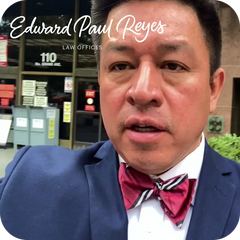Although signing an envelope might seem straightforward, doing it correctly is crucial to guarantee that your message reaches its destination. It's crucial to understand how to sign and label an envelope properly whether you're writing a letter for business, school, or personal purposes. To help you find the ideal solution for your needs, we'll go through five alternative ways to sign an envelope in this article, including several fonts and texts. In order to learn how to sign an envelope like a pro, let's get started now.
What Is an Envelope?
A flat paper container known as an envelope is used to hold and mail items like letters and documents. Depending on the size and shape of the documents they will hold, there are many different sizes and shapes of envelopes.
You also need to be familiar with the various components of envelopes in order to sign and label them properly. You should write the recipient's name and address on the envelope's front, and the return address should go on the back.
The flap, which folds down to conceal the envelope's entrance, is where you can seal or label the envelope's contents in order to keep them safe. Let's look at the various ways to sign and label envelopes now that we have a fundamental understanding of them.
When Was The First Envelope Used?
Although the precise date and place of creation are uncertain, the first envelope is thought to have been utilized in the 17th century. Letters were folded and wax-sealed in the early days of mail delivery, but as the postal service expanded, envelopes became increasingly popular to preserve the contents of the letter from damage or tampering.
Using envelopes for anything from personal letters to professional contact and marketing materials, they are a necessary component of our daily lives nowadays. No of the reason for your mail, learning how to sign and label an envelope can guarantee that it arrives quickly and safely.
The Importance of Signing and Labeling an Envelope
Making sure that your letter is delivered to the appropriate location requires both signing and labeling an envelope. Your mail could be misdirected, delayed, or delivered to the wrong address if it isn't properly labeled. Additionally, by signing your envelope, you add a personal touch that enhances the significance and recall of your message.
Taking the effort to sign and label the envelope properly demonstrates that you care about the message and its receiver, whether you're sending a letter for school or work, or just a personal message to a friend or family member. To help you choose the best solution for your purposes, we'll go through five different ways to sign and label an envelope in the next section.
Traditional Signature
Use your whole name in print or cursive as your standard envelope signature. It is generally used for business or legal writing because it is the most formal style. Simply write your entire name in the envelope's center, followed by your title (if appropriate).
Printed Signature
A printed signature is a fantastic substitute if your handwriting is less than perfect or if you prefer a more practical option. Using a scanner or an electronic signature generator tool, you can submit an image of your signature to produce a digital copy of it. Once you have it, simply print your digital signature where you would normally sign your name on the envelope. For both business and personal correspondence, this choice works well.
Script Fonts
Consider signing your envelope in a script font for a more adorning touch. Elegant script typefaces give your writing a more personal touch. If you want to give your name a more polished appearance, you can either write it by hand in the script or use a calligraphy pen. Make sure to pick a script font that is readable, suits the tone of your message, and is legible.
Block Fonts
For straightforward and quick envelope labeling, block typefaces are a common option. These typefaces are ideal for addressing envelopes for work or school since they are straightforward and simple to read. utilize a bold, readable font to type the required information (name, address, etc.) and place it in the center of the envelope to utilize a block font.
Additional Labels
Consider utilizing additional labels if you want to give your envelope a little extra flair. For instance, to add a splash of color or design, you may apply a decorative sticker or stamp on the corner of the envelope. To add a touch of individuality to the envelope, you could also use a personalized address label or return address label. Just be careful that any extra labels you apply don't cover up the essential details on the envelope, such the recipient's address or the postage stamp.
How Do You Indicate The Intended Recipient on an Envelope?
You should put the recipient's name and address legibly and precisely on the front of the envelope to identify the intended recipient. Following the street address, apartment number or suite number, city, state, and zip code should come the recipient's name. Make sure the postman can readily see the information by using a font size and style that is readable.
The upper left-hand corner of the envelope should also have a return address, just in case the letter cannot be delivered to the intended recipient. You can be sure that your envelope is properly labeled and arrives at its destination without any problem by following these easy steps.
How Do You Correctly Seal an Envelope?
Sealing an envelope correctly is crucial to ensure that the contents inside are protected and delivered safely. Here are the steps to seal an envelope correctly:
- Fold the documents neatly and insert them into the envelope. Make sure that the contents are not too thick or heavy that they will cause the envelope to tear.
- Apply a small amount of moisture to the adhesive strip of the envelope flap. You can use a damp sponge or lick the adhesive to activate it.
- Press the flap firmly onto the envelope to create a secure seal. Make sure that all edges are sealed properly and there are no gaps where the contents can fall out.
- You may also consider adding a piece of tape over the flap for added security, especially if you are sending important or valuable documents.
By following these simple steps, you can ensure that your envelope is properly sealed and your contents are protected during transit.
What Type Of Pen Should Be Used To Sign An Envelope?
To make sure your signature looks neat and professional, use the right pen when signing an envelope. The best type of pen to use is a ballpoint pen with black or blue ink. Don't use gel pens as they can smudge or run, and avoid pencils as they can be easily erased or smudged. A good ballpoint pen makes your signature clean and legible, creating a positive impression on the recipient of your letter. So, always choose a good quality ballpoint pen for signing your envelopes.
Conclusion
Even though properly signing and marking an envelope may seem like a minor detail, it can have a significant impact on whether or not your letter is delivered to the correct location. You can give your envelopes a polished, unique look while also ensuring that they are securely sealed and labeled by following these easy steps. You may send your mail with confidence and comfort if you follow these suggestions, whether you're a student, homeowner, or businessperson.
Final Thoughts
At Artlogo, we take the art of signing to the next level. We help individuals from all walks of life create a signature that reflects their personality, style, and identity.
Whether you're a student, a professional, or just someone who wants to make a lasting impression, our team of experts can guide you through the process of developing a unique handwritten signature ideas that'll stand out from the crowd.
With our help, you'll be able to confidently sign your name, knowing that your signature or autograph speaks volumes about who you are and what you represent. Don't settle for a bland and forgettable signature logo, let us help you make your mark in the world.

























Share to: